Design Flaws of Traditional Traps
Stiff Activation Requirement
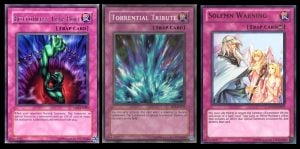
One of the reasons traditional Trap cards are no longer viable is that they have "stiff" activation requirements. By this we mean that their activation requirements aren't exactly "chainable" - they have to be activated in response to a summon, or an attack.
Cards such as Bottomless Trap Hole and Torrential Tribute have to be activated in response to a summon. Mirror Force has to be activated in response to an attack. This often means that by the time they're able to be activated, they're either off the board or will be ineffective against your opponent's field.
These kinds of Trap cards are also easier for the opponent to remove before they're activated. With all the backrow hate that's in the meta nowadays, it's hard to meet the activation requirements of these kinds of Trap cards.
Ineffective Going Second
When Geargia was a force in the meta, a pseudo-flip effect was at its core. Its main weakness was in going second, where it took an extra turn to go off. This was commonly referred to as "going third," and the same problem is faced by traditional Trap cards as well.
Reactive Traps take away from possible outs to established boards. If you're going second, cards such as Mirror Force or Torrential Tribute are basically dead in hand. But even going first, where they are more effective, those Traps fail to increase combo potential. Combo potential is very important in today's link-dominated metagame.
Traditional traps may even be considered "win-more." This is debatable, but traditional Trap cards simply don't help enough in the early game, which is the most important point of the game today. As such, they're either too slow, too reactive, or they're superfluous and win-more.
The Exception
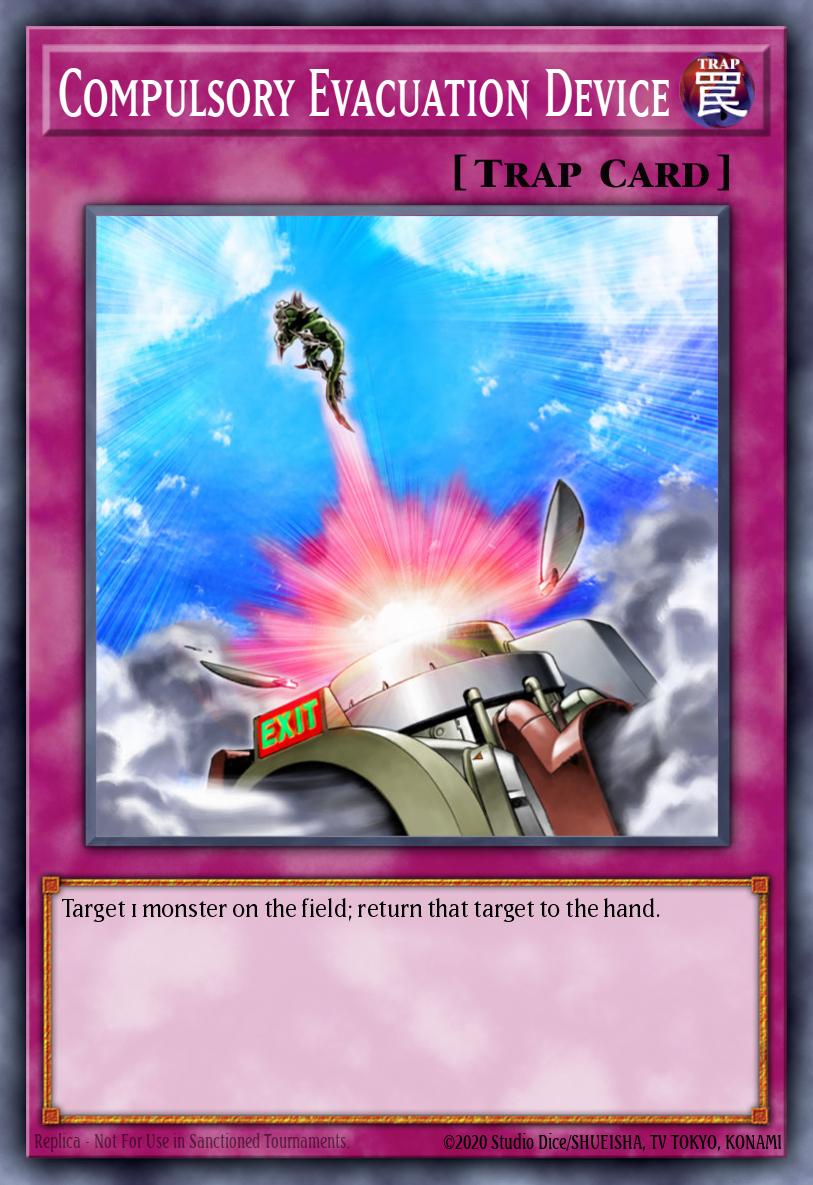
Compulsory Evacuation Device is perhaps one of the most versatile traditional Traps. Oppressively or defensively, Compulsory Evacuation Device is useful going first or second. It's disruptive, chainable, and, perhaps most importantly, it doesn't send any cards to the GY.
Compulsory Evacuation Device forces an opponent to lose a resource on the board without getting any GY effects from it. The fact that is is chainable is also an advantage; so long as there's a monster on the board, it can be activated. It can target monsters on either side of the field, meaning you can protect your own monsters or disrupt an opponent's plays.
There's a reason Bottomless Trap Hole and Torrential Tribute were unlimited, and Compulsory Evacuation Device was not!
Alternatives to Traditional Trap Cards
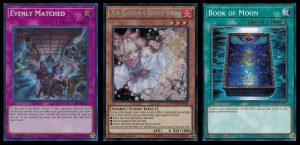
The clearest comparison to these traditional Traps are their newer, more flexible versions. New Traps, such as Evenly Matched, below, are incredibly powerful. Basically, Hand Traps are Monster cards that are discarded for quicker utility effects. Quick-Play Spells share the defensive quality of Traps, while functioning as Spells in terms of breaking boards. All of these are better options than traditional Trap cards in many ways.
"New" Traps
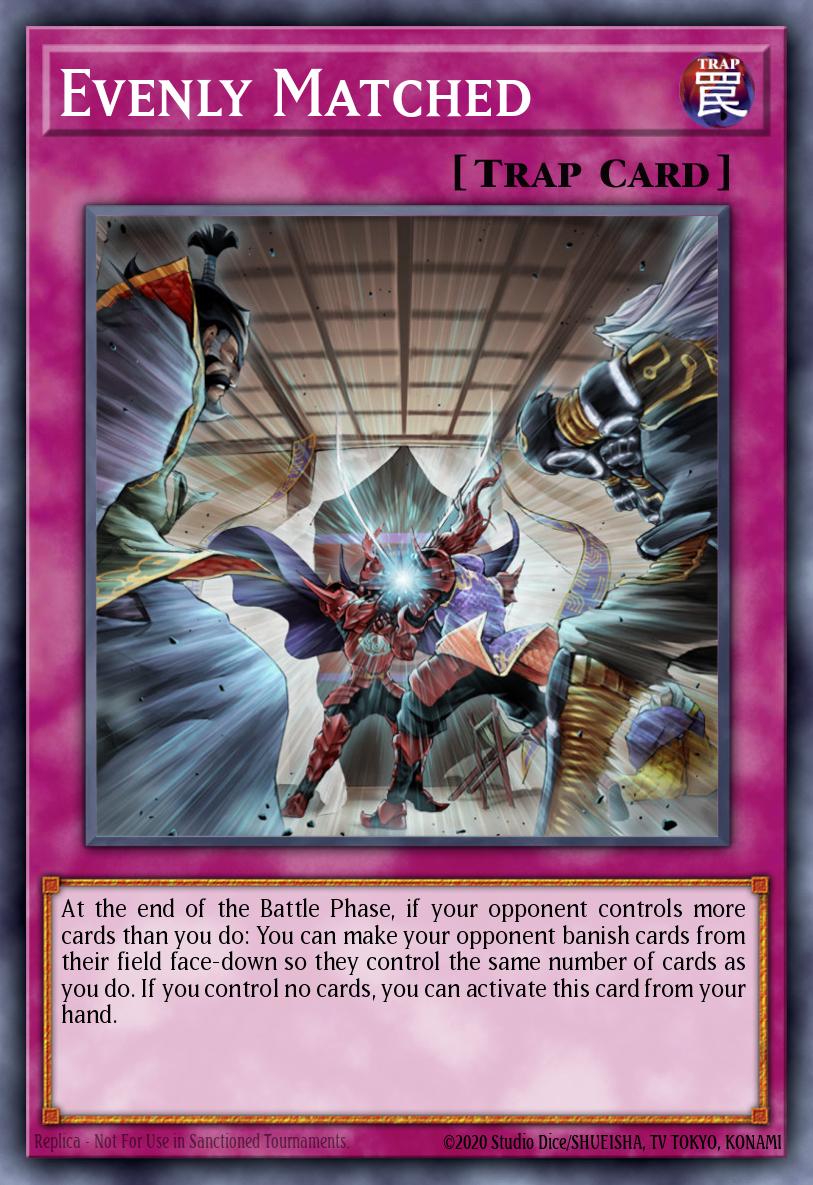
In an attempt to make traps even more effective, Konami has been beefing up today's Trap cards. Breakthrough Skill is a shining example - though reactive, it can be used both on the field and from the GY, giving it a lot of versatility.
But Konami has given us even quicker solutions. Evenly Matched is a relatively new card that essentially acts as an Evilswarm Exciton Knight in your hand. Not much data is available for this new type of Trap, but it does keep huge boards in check, which is a function of a traditional Trap!
Hand Traps
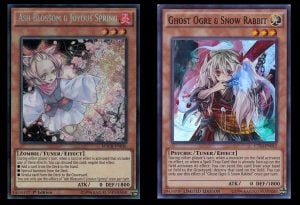
Hand Traps are, basically, successors of Traditional Trap cards. They do much to mitigate the weaknesses of traditional Traps. Hand traps can be activated at easier times, defend while going second, and are virtually impossible to read. On the whole, Hand Traps defend against oppressing plays when going second, and can also oppress the opponent when going first.
Hand traps have become the go-to Trap cards of today's metagame. However, they do have their own design issues. Hand Traps are often limited in scope. Can you imagine a Hand Trap being able to counter literally anything? Instead, Hand Traps counter specific things, so they're used to interrupt combos.
Hand Traps require you to understand when they will be most effective. In this they are reminiscent of traditional Trap cards as they require knowledge and timing to be effective.
Quick-Play Spells
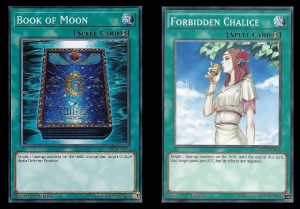
There are not many Quick-Play Spells in Yu-Gi-Oh! I believe this to be due to their inherent traits that make them superior to both Spells and Traps. Cards like Book of Moon are incredibly useful. Book in particular can help you stop combos, break boards, attack over threats, block attacks and even stop effect negation.
You can activate Quick-Play Spells either by setting them (if it's your opponent's turn) or from your hand (on your turn). This versatility makes Quick-Play Spells very powerful. Simply put, they take the best qualities of both Hand Traps and traditional Traps and put them into a Spell card.
Where do Traditional Traps go from here?
I do not see Traps continuing the trends of the past. Lately, Traps have lost a bit of their identity. They have become more of a "powerful effect" kind of card, such as Trickstar Reincarnation. In fact, most archetype Traps are searchable, negating the "surprise" aspect of a Trap. Quicker options will replace weaker, reactive Traps. Alternatively, they will become more powerful to make up for their strict activation requirements.




